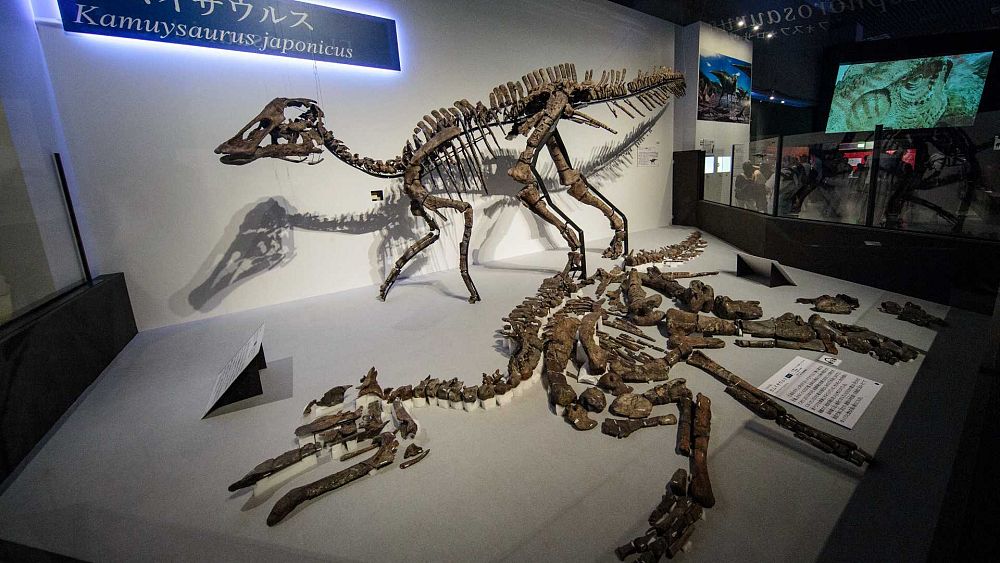
[ad_1]
The decline of the dinosaurs began with the cooling of the planet long before the fall of the asteroid that ended their era 65 million years ago, according to a study released Tuesday.
The scientific community is unanimous that it is this star that caused the extinction of these animals, since the giant crater caused by the impact of the meteor was discovered in Mexico in 1980.
The impact produced a shock wave strong enough to create a cloud of dust and gas that enveloped the planet, resulting in climate disruption and the extermination of three-quarters of the species, including non-avian dinosaurs.
But the debate among paleontologists revolves around whether this mass extinction happened suddenly, or if the asteroid dealt the final blow to these animals, given that they were already in a regressive phase.
The author of the study, which was published in “Nature Communications”, biologist Fabian Condamine told AFP that the available data is not strong enough to favor one hypothesis over the other.
The researcher from the Institute of Evolutionary Sciences in Montpellier (France) explained that “the fossil records (i.e. dinosaur bones) are incomplete, and their conservation is poor, and there are some geographic regions, such as those in the tropics, from which information is not available equivalent to what is available in other regions, in addition to the existence of data from periods of a certain period more than another .
To correct this situation, the researcher and his team, made up of French, English and Canadians, used a new statistical modeling method called “Baisian” which calculates the probabilities of causes from the study of known elements. .
The researchers chose 1,600 fossils belonging to six families of dinosaurs, including the famous tyrannosaurs, triceratops and hadrosaurs known from the film “Jurassic Park”.
Among these six families, three are herbivorous and the same are carnivorous, including 247 species. Each fossil has been given a code that allows us to trace the successive diagnoses that scientists have made since its discovery.
Using this statistical modeling method, scientists were able to determine the date of emergence and extinction of each species, over a period of time stretching from the late Cretaceous 145 million years ago to the end of the Cretaceous period. pre-disaster stage, that is, is 66 million years ago.
As a result, it was found that “diversity peaked 76 million years ago, and the rate of formation of new species was high around that time, then began a slow decline,” says Fabian Condamine.
It has been noted that the number of dinosaur species fell from around 50 to less than 20 66 million years ago, over a period of ten million years, a period much longer than the period of the hominids to which the human race belongs.
The researchers compared these statistical data with environmental data already known (climatic, marine, geological, etc.).
The results showed a perfect correlation with the climatic curves, because “the higher the rate of extinction of the species, the lower the temperatures”, according to the expert in macroevolution.
This sharp increase in cold, which caused temperatures on Earth to drop to between 7 and 8 degrees, was occurring exactly in parallel with the decline in the presence of dinosaurs.
“It was much warmer then, and there were palm trees and mangroves in the Bering Strait” between Siberia and Alaska today, said Fabian Kondamine.
However, dinosaurs could not produce their own body heat, as humans do, and were highly dependent on their environment for food, movement, and reproduction, and therefore their metabolism was not adaptable to change.
Another important factor is that the first extinctions affected herbivorous dinosaurs, around two million years ago before including giant carnivores.
Thus, the scarcity of herbivorous dinosaurs that were the prey of these carnivores could have upset the balance of ecosystems and caused successive extinctions among other families of dinosaurs, according to the study.
And when a meteorite with a diameter of 12 kilometers hit the Earth, the existence of the dinosaurs had already receded, and they could not recover from this disaster, unlike some small mammals did.
Source link